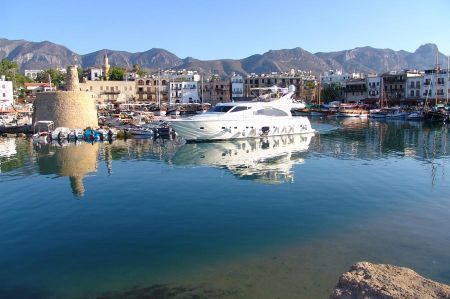Kyrenia - a picturesque Venetian Harbour Town
One of the region’s many highlights is the picturesque port town of Girne which is famous for its historic and perfectly crescent-shaped harbour set against the dramatic backdrop of the Five Finger Mountains.
You will enjoy exploring the Venetian castle and facades, cobbled medieval streets, as well as the ancient stone-built warehouses, today transformed into a labyrinth of fascinating craft shops.
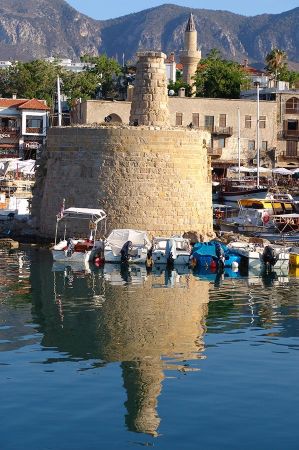 Possibly under the Roman Emperor Claudius, the city received an aqueduct; the city is also mentioned in an inscription from the Flavian period. It is not certain whether she had the status of a civitas. In early Christian times the city became a bishop's seat under the name Kyrenia.
Possibly under the Roman Emperor Claudius, the city received an aqueduct; the city is also mentioned in an inscription from the Flavian period. It is not certain whether she had the status of a civitas. In early Christian times the city became a bishop's seat under the name Kyrenia.
Under the Byzantine Emperor Alexios I Komnenos, the castle was expanded just as much as St. Hilarion and Kantara on the Karpas, as there was a fear in Constantinople that the island might be invaded by the Seljuks, who had already conquered large parts of Asia Minor . In 1092/94 rebels occupied Cyprus, their leader was a certain Rapsomates. Johannes Dukas took Kyrenia without major resistance and had the uprising suppressed, which was directed against the tax regime of Constantinople, but was also caused by the dispute over jurisdiction between church and state in the judiciary, as the report by Bishop Nikolaos Muzalon shows.
The town forms the hub of activity in North Cyprus, as visitors and locals alike are drawn to its unhurried pace of life combined with a fantastic array of water-facing restaurants, cafes,bars and shops, including the newly-restored Bandabulya – a collection of craft shops, juice bars and cafes, complete with a Wireless Hotspot.
Museums are plentiful in Kyrenia (Girne), including the museum of folk art and public arts.
Fresh Local Cuisine
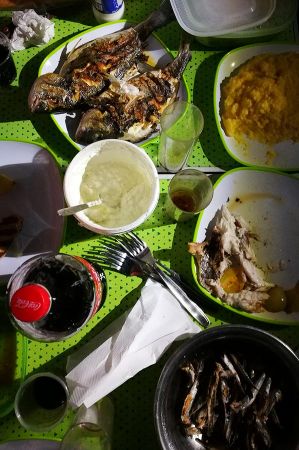 The harbour is home to many local fishing boats - you will relish a mouth-watering feast overlooking the harbour, with an abundance of fresh seafood, grilled meat and kebab dishes or traditional cuisine which makes fine use of the delicious local fresh fruit, vegetables, herbs and spices.
The harbour is home to many local fishing boats - you will relish a mouth-watering feast overlooking the harbour, with an abundance of fresh seafood, grilled meat and kebab dishes or traditional cuisine which makes fine use of the delicious local fresh fruit, vegetables, herbs and spices.
Golf in North Cyprus
Now is also an exciting time to visit the Girne region as facilities are being developed to add variety to life, such as the 2007 opening of Korineum, the first professional 18-hole golf course in North Cyprus - as well as an array of new boutique and luxury hotels.
Kyrenia with Mr. Weisenberg
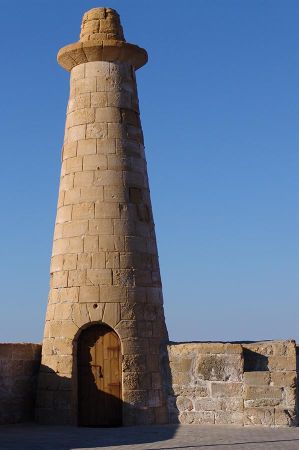 With a backpack and camera case we set off for the main road to Girne. Karlheinz knows how to bring a passing dolmus shared taxi to a halt. One thing stands out immediately at a hint - fascinating! We then sit on two very low white plastic stools, barely 20 cm high, because all the other seats are already occupied. We are actually in the Orient. Now you can see and smell it. The upholstery on the seats is torn down to the springs. The dust and the 12 people make the air tight. With 0.75 TL per person, which is half a euro, we are quickly in Girne. Many of these shared dolmus taxis are parked in a square that turns into an Ottoman cemetery.
With a backpack and camera case we set off for the main road to Girne. Karlheinz knows how to bring a passing dolmus shared taxi to a halt. One thing stands out immediately at a hint - fascinating! We then sit on two very low white plastic stools, barely 20 cm high, because all the other seats are already occupied. We are actually in the Orient. Now you can see and smell it. The upholstery on the seats is torn down to the springs. The dust and the 12 people make the air tight. With 0.75 TL per person, which is half a euro, we are quickly in Girne. Many of these shared dolmus taxis are parked in a square that turns into an Ottoman cemetery.
We will now take a look at this Ottoman cemetery with a few stone graves and a small domed building. It's really not significant, but the construction of the dome was easy to study and deserved a photo.
The port attracts us more. There are also enough people streaming in his direction. Karlheinz suddenly hears Greek. An old man struggles up the wide stairs with a stick and starts talking to people. A boarded-up church building on the right side attracts our attention. Opposite is a large and noble, empty building with a neglected garden. Now we suspect it: the house once belonged to a rich Greek and the Greek Orthodox church opposite was allowed to fall into disrepair by the Turks. 30 years is a long time. At the end of the stairs, down to the harbour, a ring of houses opens up, like the ones you see from the beautiful sun protection roofs of the restaurants. In front of it is the promenade with the souvenir shops in old, tall houses that appear to have been slightly renovated.
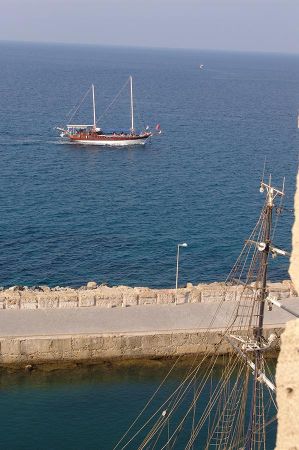 Sun protection roofs of the restaurants. In front of it is the promenade with the souvenir shops in old, tall houses that appear to have been slightly renovated. Some wooden balconies may have looked nicer before they were renovated. A quay wall extends in a horseshoe shape and protects the small harbour. White spray whips over the very high wall. You have to expect to get wet if you want to follow this quay wall to the end. But the journey is worth it, because from here you can see the entire harbour and the defensive walls of the huge citadel. I quickly sketched them, and later also a mosque not far from the stairs below the noble house.
Sun protection roofs of the restaurants. In front of it is the promenade with the souvenir shops in old, tall houses that appear to have been slightly renovated. Some wooden balconies may have looked nicer before they were renovated. A quay wall extends in a horseshoe shape and protects the small harbour. White spray whips over the very high wall. You have to expect to get wet if you want to follow this quay wall to the end. But the journey is worth it, because from here you can see the entire harbour and the defensive walls of the huge citadel. I quickly sketched them, and later also a mosque not far from the stairs below the noble house.
On the way back from the harbour wall we see an extremely white church with a slender, high tower. It was dedicated to the Archangel Michael and is now, as a Northern Cyprus guide tells us, an icon museum - currently closed due to construction work. Open Greco-Roman burial chambers in the sandstone of the site next to the church indicate that the alley from which they are seen was once a stream.
Then we reach the citadel entrance, just as the knights once crossed a bridge. But this is no longer a drawbridge. 7.oo TL entrance fee per person. From the price of around €4.5 we can tell that there is probably something on offer. We first come to the NW tower near the city. From here the view is remarkable. Below us the round harbour opening with the many boats and the breakwater that protects them towards the sea. Then we cross the large castle courtyard and look at the shipwreck museum. Approximately 300 BC The ship is said to have sunk off the Cypriot coast after being hijacked by pirates.
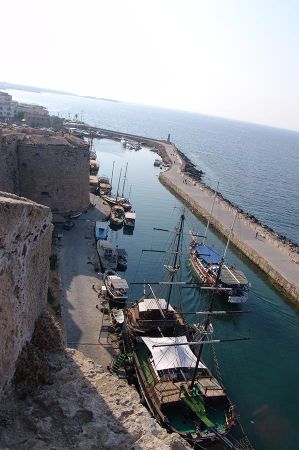 The remains of the ship's hull and parts of the cargo were lifted in the 1960s and exhibited here. Salt barrels, amphoras and many clay vessels can be admired. We were very surprised that the ship had a nailed-on lead cladding. In addition to the shipwreck museum, there is an archaeological museum with a Neolithic house and finds from the eastern area of Girne. The fact that the castle was once a prison where torture was common is something that affects every visitor, as such scenes of torture - especially wheeling - are depicted on almost life-sized puppets.
The remains of the ship's hull and parts of the cargo were lifted in the 1960s and exhibited here. Salt barrels, amphoras and many clay vessels can be admired. We were very surprised that the ship had a nailed-on lead cladding. In addition to the shipwreck museum, there is an archaeological museum with a Neolithic house and finds from the eastern area of Girne. The fact that the castle was once a prison where torture was common is something that affects every visitor, as such scenes of torture - especially wheeling - are depicted on almost life-sized puppets.
However, the Catholic Church comes off very badly because it can be seen that these tortures take place on behalf of and in the presence of church dignitaries, perhaps bishops. Hatred and revenge are also demonstrated against the incarcerated people who were supposed to perish in deep dungeons. The story of a pregnant rival who didn't want to perish in the dungeon is probably very touching. But remember, what this means is that the island's early Christian residents deserve nothing but contempt from the Turks now living here.
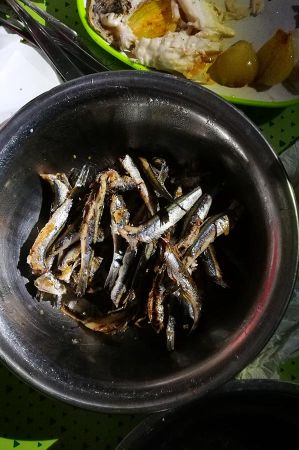 In the northeast tower you can see flags and soldiers of the castle's former owners. They all come off badly and seem like caricatures. In the southeast tower you can see scenes from the life of the guards.
In the northeast tower you can see flags and soldiers of the castle's former owners. They all come off badly and seem like caricatures. In the southeast tower you can see scenes from the life of the guards.
The tour along the castle crown, approx. 100 x 100 m, allows us to really appreciate the dimensions of this castle. The defensive bastions are powerful and seem almost impossible to defeat. The history of the Crusades makes this need understandable. The Crusaders' retreat to the island was not without loot and they had to protect themselves here.
In the courtyard there is a small cafe with shady trees. It is very hot. Here we enjoy a lemonade. Right next to it you can look down a staircase into a cistern. It even contains water, but no longer drinking water. Finally, in the entrance area of the citadel we discover the entrance to the former St. George's Chapel, a beautifully designed Byzantine church that is nestled against the castle wall. It is completely empty. Some clay sarcophagi can be seen opposite. There is no indication that these troughs had any essential functions in burial customs. They were like Roman pots in which the corpse was supposed to be mummified in the sun.
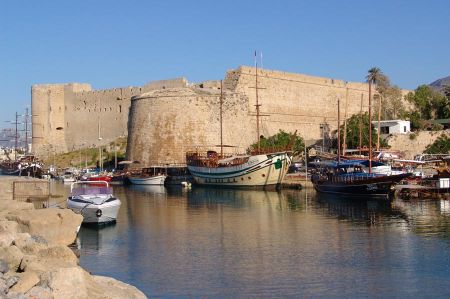 After the extensive sightseeing tour of the citadel, we come back to the harbour promenade and are amazed that the prices in the restaurants and shops are advertised in Cypriot pounds, the southern Cypriot Greek currency. We see this as a sign that the southern Cypriots are welcome as suppliers of money.
After the extensive sightseeing tour of the citadel, we come back to the harbour promenade and are amazed that the prices in the restaurants and shops are advertised in Cypriot pounds, the southern Cypriot Greek currency. We see this as a sign that the southern Cypriots are welcome as suppliers of money.
Then we go up to the Dolmus shared taxi place. It takes some time until the first taxi in the direction of Lapta is full. Despite the still high temperature during the day, it feels good to sit in such a small vehicle with other people and thus be able to reduce fears of contact. We don’t want to experience Northern Cyprus from a distance.
We would like to thank Mr Weisenberg for this travel report!
Please read as well:
Cyprus - beautiful island paradise on earth
St. Hilarion - the Crusaders Castle
-
 Girne Harbor town Cyprus
Girne Harbor town Cyprus
Girne Harbor town Cyprus
Girne Harbor town Cyprus
-
 Girne Harbor town Cyprus
Girne Harbor town Cyprus
Girne Harbor town Cyprus
Girne Harbor town Cyprus
-
 Girne Harbor town Cyprus
Girne Harbor town Cyprus
Girne Harbor town Cyprus
Girne Harbor town Cyprus
-
 Girne Harbor town Cyprus
Girne Harbor town Cyprus
Girne Harbor town Cyprus
Girne Harbor town Cyprus
-
 Girne Harbor town Cyprus
Girne Harbor town Cyprus
Girne Harbor town Cyprus
Girne Harbor town Cyprus
-
 Girne Harbor town Cyprus
Girne Harbor town Cyprus
Girne Harbor town Cyprus
Girne Harbor town Cyprus
-
 Girne Harbor town Cyprus
Girne Harbor town Cyprus
Girne Harbor town Cyprus
Girne Harbor town Cyprus
-
 Girne Harbor town Cyprus
Girne Harbor town Cyprus
Girne Harbor town Cyprus
Girne Harbor town Cyprus
-
 Girne Harbor town Cyprus
Girne Harbor town Cyprus
Girne Harbor town Cyprus
Girne Harbor town Cyprus
-
 Girne Harbor town Cyprus
Girne Harbor town Cyprus
Girne Harbor town Cyprus
Girne Harbor town Cyprus
-
 Girne Harbor town Cyprus
Girne Harbor town Cyprus
Girne Harbor town Cyprus
Girne Harbor town Cyprus
-
 Girne Harbor town Cyprus
Girne Harbor town Cyprus
Girne Harbor town Cyprus
Girne Harbor town Cyprus
-
 Girne Harbor town Cyprus
Girne Harbor town Cyprus
Girne Harbor town Cyprus
Girne Harbor town Cyprus
-
 Girne Harbor town Cyprus
Girne Harbor town Cyprus
Girne Harbor town Cyprus
Girne Harbor town Cyprus
-
 Girne Harbor town Cyprus
Girne Harbor town Cyprus
Girne Harbor town Cyprus
Girne Harbor town Cyprus
-
 Girne Harbor town Cyprus
Girne Harbor town Cyprus
Girne Harbor town Cyprus
Girne Harbor town Cyprus
-
 Girne Harbor town Cyprus
Girne Harbor town Cyprus
Girne Harbor town Cyprus
Girne Harbor town Cyprus
-
 Girne Harbor town Cyprus
Girne Harbor town Cyprus
Girne Harbor town Cyprus
Girne Harbor town Cyprus
-
 Girne Harbor town Cyprus
Girne Harbor town Cyprus
Girne Harbor town Cyprus
Girne Harbor town Cyprus
-
 Girne Harbor town Cyprus
Girne Harbor town Cyprus
Girne Harbor town Cyprus
Girne Harbor town Cyprus
-
 Girne Harbor town Cyprus
Girne Harbor town Cyprus
Girne Harbor town Cyprus
Girne Harbor town Cyprus
https://www.alaturka.info/en/cyprus/kyrenia/1674-kyrenis-a-venetian-harbour-town#sigProId2a1f4ae676
.
